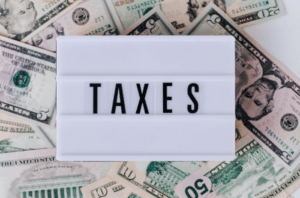Reducing your tax liability means taking advantage of the deductions you can and minimizing the bottom-line total used to calculate your tax bill. Taxpayers don’t need to be experts on all things tax law to get the most out of their next tax return. However, there are several strategies for using your gross revenue wisely so that less of it is eligible for taxes and your taxes are working harder for you.
New business deductions
Did you start a new business or venture in 2021? As long as your start-up expenses do not exceed $50,000, you can generally deduct $5,000 in business start-up costs during your first year of business.
The venture must launch before year-end and be an ongoing activity to qualify for this tax deduction.
Also, if you researched a business that failed to launch, you may still be eligible for a tax deduction. Whether you’re able to deduct the costs incurred here depends on the specificity of the research you completed. For example, if you were investigating a specific business to create or acquire, you could deduct personal expenses incurred on Form 1040, Schedule A under “miscellaneous expenses.”
Alternatively, if you don’t have a specific business in mind and nothing comes from your research, you can’t deduct the costs incurred during research or investigation.
This deduction is complex, so consult with the team at Hayes & Associates to determine what is and isn’t deductible for any given year before you claim it on your own.
Optimize deductions
You must deduct everything you are eligible for to minimize your tax liability. But you shouldn’t stop there. For example, for some business expenses, you’re able to choose between two ways of deducting the expense.
For example, you can deduct the cost for cars and travel or use the IRS standard mileage rate for the deduction. Another example is using large purchases as a whole-item deduction or depreciation over time. Keeping meticulous records allows you to compare each method’s advantages and choose the one that will provide the greatest return.
Build a retirement fund
Not only is it common sense to save for retirement—it’s also a tax tip that can help you pay less in taxes. As a small business owner, you can save up to $57,000 per year in total retirement contributions. These contributions are tax-free, and you have a few options for executing this strategy:
- SIMPLE IRA = Savings Incentive Match Plan/Individual Retirement Account. As an employer, you can require a 2% contribution from employee paychecks to their retirement fund or offer an employer match up to 3%. Employees can contribute $13,500 per year (and an additional $3,000 for employees over 50).
- Roth IRA = Individual Retirement Account allowing for tax-free qualified withdrawals. These savings accounts are preferable for those making less than $140,000 annually and who think taxes will be higher for them in the future. The money is taxed when it goes into the account but can be withdrawn tax-free. However, the employer match is pre-tax money.
- 403(b) = A retirement account for certain non-profit and public school employees. Like other retirement plans, employers can match employee contributions pre-taxes and can maximize benefits if employees stay for 15 years of employment.
- Simplified Employee Pension Plan (SEP) = A retirement account with higher contribution limits available for self-employed individuals. A simplified retirement account that provides employers tax-free contributions and a tax credit when initiating the plan.
Make the switch
Suppose your business operates as a sole proprietorship or other business structure. In that case, it may be beneficial for your tax liability to make the switch to a Limited Liability Corporation or LLC. Many small business owners can omit the employer portion of their FICA taxes and decrease their tax liability. Further, you can have your first $50,000 taxed at a lower rate if structured as a C-corporation.
Focus on healthcare
If you have a high deductible health care plan, you may be eligible for health savings accounts (HSAs), which make it easy to save tax-free money to be used for health and wellness spending. Both contributions and withdrawals are tax-free, which makes this option particularly appealing. Raises might seem like an easy win, but you’d be better off contributing more to your employees’ healthcare. A raise is subject to employer taxes and then taxed on the employee side as part of their income. Instead, you can cover more of their health insurance costs without paying any taxes.
Make improvements and repairs around the office
The IRS categorizes the cost of property maintenance as either “repairs” or “improvements.” Therefore, you can generally deduct the cost of a routine repair within a single year. On the other hand, the cost of improvements typically needs to be depreciated for up to 27.5 years.
Be careful if you’re improving a home office area. Even in light of the pandemic, there are strict rules for what qualifies as a home office. Mainly, individuals must use the space solely for business purposes. A garage used solely to house inventory? Home office. But if you also park your car in there? Not a home office.
It’s not too late to minimize your small business tax liability with some carefully placed purchases or donations and manage how you deduct your business expenses. Talk with your trusted tax professional at Hayes & Associates to determine the best course forward for your company.





